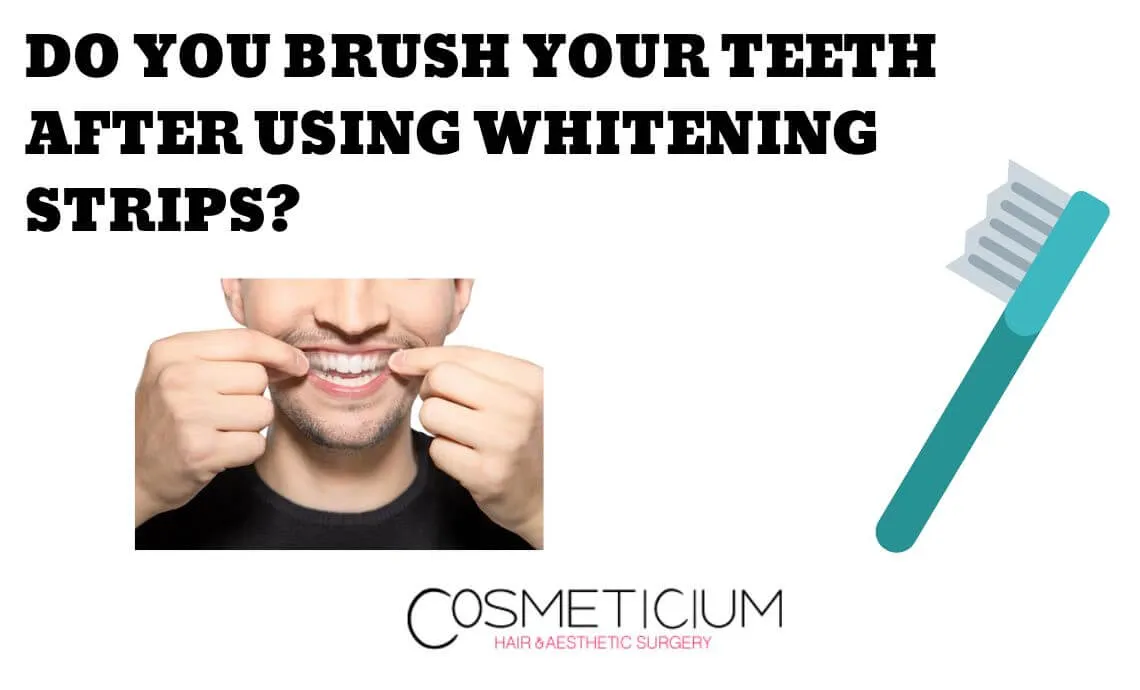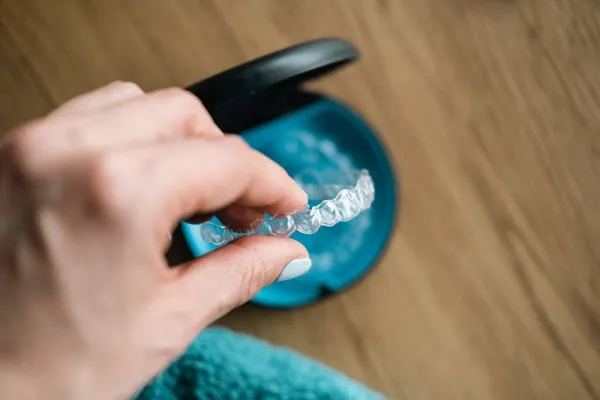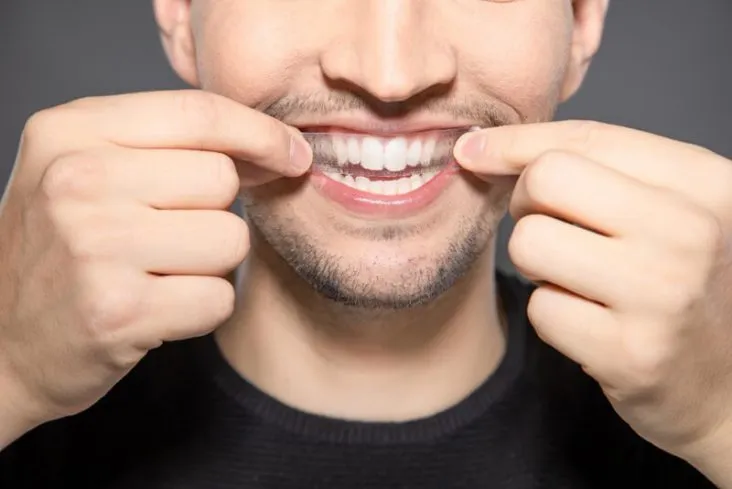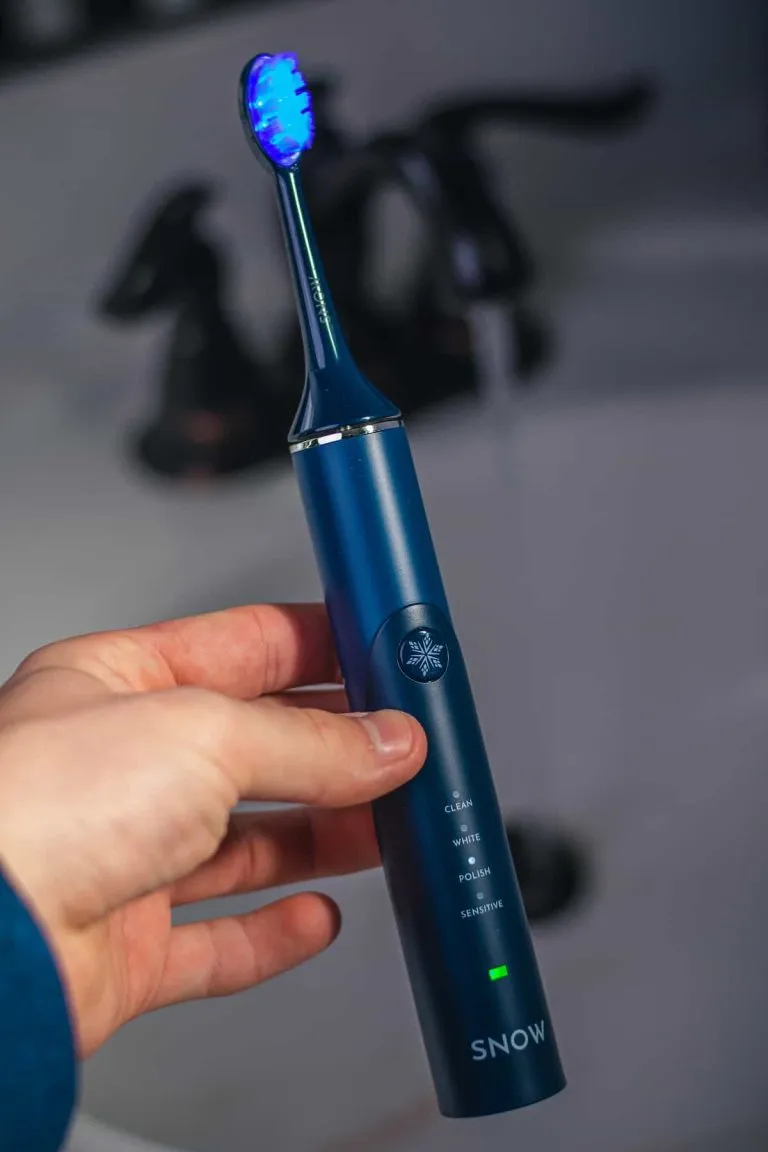Understanding Teeth Whitening Strips
Teeth whitening strips have become a popular and convenient method for enhancing the brightness of your smile. These strips, typically made of a flexible plastic, are coated with a whitening agent, most commonly hydrogen peroxide or carbamide peroxide. When applied to the teeth, the whitening agent penetrates the enamel, breaking down stains and discoloration that accumulate over time. The appeal of whitening strips lies in their ease of use, affordability, and the ability to achieve noticeable results within a relatively short period. Many people find them to be a practical alternative to professional treatments, offering a simple way to boost their confidence and improve the aesthetic appearance of their teeth. However, the effectiveness and longevity of the results are significantly influenced by how you care for your teeth both during and after the whitening process.
How Whitening Strips Work
Whitening strips work through a chemical process that targets the stains within your tooth enamel. The active ingredient, usually peroxide, releases oxygen molecules when it comes into contact with the teeth. These oxygen molecules react with the stain molecules, breaking them down and making them less visible. The concentration of the whitening agent varies between products, which impacts the speed and degree of whitening. Generally, higher concentrations may lead to faster results, but they can also increase the risk of sensitivity. The strips are designed to adhere closely to the teeth, ensuring that the whitening agent has sufficient contact time to be effective. The duration of application varies as well, with some strips requiring only a few minutes of wear, and others requiring up to an hour or more, depending on the product and the desired outcome. Consistent use, as per the product instructions, is key to achieving the desired whitening effect.
The Science Behind Teeth Whitening

The science of teeth whitening centers on the interaction between the whitening agent and the tooth’s structure. Tooth enamel, the outermost layer of the tooth, is porous and can absorb stains from various sources, including food, drinks, and tobacco. The peroxide in whitening strips penetrates these pores, initiating an oxidation reaction. This reaction breaks down the stain molecules, which are large, complex compounds, into smaller, less visible ones. The process does not remove the enamel itself; it simply changes the color of the existing stains. The effectiveness of the whitening process depends on several factors, including the type of stain, the concentration of the whitening agent, and the duration of exposure. While whitening strips can effectively treat surface stains, they may be less effective on deeper stains, such as those caused by certain medications or intrinsic discoloration. This is why it’s important to understand what is causing any discoloration before you choose a whitening method, as this can greatly impact the results.
Why Aftercare Matters for Results
After using teeth whitening strips, the enamel is temporarily more susceptible to staining. This is because the pores in the enamel are slightly more open after the whitening process. Proper aftercare is essential to prevent new stains from forming and to maintain the results of the treatment. Neglecting aftercare can lead to rapid re-staining, diminishing the effects of the whitening strips. Additionally, the sensitivity of the teeth might be increased immediately after the treatment, and proper care can help manage any discomfort. Adhering to a specific set of guidelines, which often includes avoiding certain foods and beverages, practicing gentle brushing, and considering the use of a whitening toothpaste, is highly recommended. By following these guidelines, you can extend the longevity of your brighter smile and avoid potential complications. This proactive approach ensures that the investment in whitening strips yields lasting benefits.
The Importance of Maintaining Your Smile
Maintaining a bright smile is crucial for several reasons, including boosting self-esteem and enhancing overall oral health. A clean, white smile often conveys confidence and vitality. When teeth are stained or discolored, it can make a person feel self-conscious, affecting social interactions and self-perception. Furthermore, maintaining good oral hygiene helps prevent various dental issues, such as cavities, gum disease, and bad breath. The commitment to aftercare is not just about appearance; it is a holistic approach that includes the health of your teeth and gums. It can also contribute to your overall well-being. Regular dental check-ups and a consistent oral care routine, including brushing, flossing, and the use of appropriate dental products, are essential for a healthy, attractive smile.
Immediate Aftercare Following Whitening Strips

Immediately after removing whitening strips, there are several steps to take to maximize results and minimize sensitivity. First, rinse your mouth with water to remove any residual whitening agent. Avoid using mouthwash immediately after, as some mouthwashes contain ingredients that can interfere with the whitening process or cause sensitivity. Then, it’s generally recommended to wait before brushing your teeth. While it might be tempting to brush immediately, the enamel is slightly more porous and vulnerable. Waiting at least 30 minutes to an hour allows the enamel to re-harden, minimizing the risk of abrasion and sensitivity. During this waiting period, refrain from consuming any foods or beverages that could stain your teeth. This allows the whitening process to settle and reduces the chance of staining immediately after the treatment. These initial steps are a critical part of the aftercare regimen and play a key role in preserving your newly whitened smile.
Gentle Brushing After Whitening
When you do brush your teeth after using whitening strips, adopt a gentle approach. Use a soft-bristled toothbrush to prevent any abrasion to the enamel, as it is temporarily more vulnerable. Apply minimal pressure while brushing, focusing on thoroughly cleaning all surfaces of the teeth without being aggressive. Brushing too hard can remove the enamel and increase sensitivity. Choose a toothpaste that is specifically formulated for sensitive teeth or a non-abrasive option. Look for ingredients like fluoride, which strengthens enamel and helps protect against sensitivity. Avoid toothpastes with harsh whitening agents immediately after your treatment, as they can potentially cause irritation. Brushing gently helps to maintain oral hygiene while minimizing the risk of damaging the newly whitened surface. Remember, gentle care is key to preserving the results of your whitening treatment.
Timing Your Brushing
The timing of when you brush your teeth after using whitening strips is crucial. As mentioned earlier, it’s generally advisable to wait for at least 30 minutes to an hour after removing the strips before brushing. This allows the enamel to re-harden and reduces the risk of abrasion and increased sensitivity. Ideally, brush your teeth before applying the whitening strips to remove any surface debris and plaque. This allows the whitening agent to come into direct contact with your teeth. After the strips, it is recommended to delay brushing. Consider brushing your teeth in the morning before you apply the strips, then again in the evening, following the waiting period after removing the strips. Adjust your brushing schedule to accommodate the whitening treatment, focusing on gentle care and appropriate timing to maintain the health of your teeth and the effectiveness of your whitening efforts.
Choosing the Right Toothpaste

Selecting the right toothpaste can significantly impact the longevity of your whitening results. After a whitening treatment, opt for a toothpaste that is formulated for sensitive teeth. These toothpastes often contain ingredients like potassium nitrate or stannous fluoride, which help to reduce sensitivity. Avoid toothpastes with high levels of abrasives, as they can potentially damage the enamel, especially when it is temporarily more vulnerable after whitening. Look for toothpastes that contain fluoride, as it strengthens the enamel and helps to prevent cavities. Some toothpastes are designed to whiten teeth; however, choose a gentle whitening toothpaste that is appropriate for your needs and does not contain harsh chemicals that could cause sensitivity or irritation. Read the labels carefully, and consult with your dentist if you are unsure which toothpaste is best for your situation. Make sure to use a soft-bristled toothbrush to avoid abrasion while brushing.
Foods & Drinks to Avoid After Whitening
Certain foods and beverages can stain your teeth, especially immediately after a whitening treatment. It is crucial to be mindful of what you consume to maintain your bright smile. Avoid highly pigmented foods and drinks, such as coffee, tea, red wine, berries, and dark sauces like soy sauce and balsamic vinegar. These substances contain chromogens, which are color-producing compounds that can easily stain your teeth. Additionally, it’s best to stay away from acidic foods and drinks, like citrus fruits and carbonated beverages, as these can erode the enamel and make it more susceptible to staining. For the first few days after whitening, focus on consuming light-colored foods, such as white rice, chicken, and dairy products. If you do consume staining foods or drinks, rinse your mouth immediately with water to help prevent staining. It is very important to avoid these foods and beverages right after you use whitening strips.
Foods That Can Stain Your Teeth
Various foods are known to stain teeth, so being aware of them helps you make informed dietary choices. Berries, such as blueberries, blackberries, and raspberries, are high in pigments and can stain teeth. Dark sauces like soy sauce, balsamic vinegar, and tomato sauce can also cause discoloration. Curry, containing turmeric, is notorious for staining teeth due to its strong yellow pigment. Candies and sweets, particularly those with artificial coloring, can contribute to stains. When consuming these foods, consider rinsing your mouth with water immediately after to minimize the staining effect. Brushing your teeth after eating these foods may help, but wait at least 30 minutes to avoid abrasion if you have recently used whitening strips. Moderation and mindful consumption are key strategies in maintaining a bright smile.
Beverages to be Mindful Of

Certain beverages are notorious for causing teeth stains and discoloration. Coffee and tea, particularly black tea, are rich in tannins, which are compounds that can adhere to the enamel and cause staining. Red wine contains both tannins and pigments, making it a significant contributor to staining. Dark juices, such as grape juice and cranberry juice, also have high levels of pigments that can stain teeth. Even clear beverages like sports drinks can contain artificial colors that stain teeth. When consuming these beverages, consider using a straw to minimize contact with your teeth. If you enjoy these drinks, brushing your teeth or rinsing your mouth with water after consumption is a good practice. This helps remove the staining agents and helps to maintain the results of the whitening treatment.
Long-Term Maintenance for a Brighter Smile
Long-term maintenance is essential for keeping your teeth white and bright after using whitening strips. Consistent oral hygiene practices are fundamental. Brush your teeth twice a day for two minutes each time, and floss daily to remove plaque and food particles. Consider using a whitening toothpaste, but choose a gentle formula, and alternate with a toothpaste for sensitive teeth if needed. Limit the consumption of staining foods and drinks as much as possible, and rinse your mouth with water after consuming them. Regular dental check-ups are crucial for professional cleanings and to monitor the health of your teeth. If needed, schedule periodic touch-up treatments with whitening strips or consider professional whitening to maintain the desired level of brightness. A combination of diligent home care and professional support will help you sustain a beautiful, white smile.
Regular Dental Check-ups
Regular dental check-ups are a critical component of maintaining oral health and the results of teeth whitening. During a check-up, your dentist can assess your teeth and gums, identify any potential issues, and provide a professional cleaning to remove plaque and tartar that regular brushing and flossing may miss. Professional cleanings can also help remove surface stains and restore the natural brightness of your teeth. Your dentist can provide personalized recommendations for maintaining your white smile, including advice on brushing techniques, toothpaste selection, and dietary habits. Regular check-ups also allow for early detection of dental problems, such as cavities or gum disease, which can be addressed promptly to prevent more serious issues. Schedule check-ups every six months or as recommended by your dentist to maintain your oral health.
Incorporating a Whitening Toothpaste

Incorporating a whitening toothpaste into your daily routine can help to maintain and even enhance the brightness of your teeth. Whitening toothpastes typically contain mild abrasives or chemical agents, such as hydrogen peroxide or baking soda, that help remove surface stains. When choosing a whitening toothpaste, read the labels and choose one that is gentle on the enamel. Some whitening toothpastes also contain fluoride, which helps strengthen your teeth and protects against cavities. Use the whitening toothpaste as part of your regular brushing routine twice a day. It’s important to note that whitening toothpastes do not significantly change the color of your teeth. They are more effective at removing surface stains rather than addressing intrinsic discoloration. If you want to achieve a brighter smile, consider other whitening methods. Be mindful of your overall oral health by combining the use of whitening toothpaste with other maintenance practices.
Professional Whitening Options
Professional teeth whitening offers a more powerful and effective approach to achieving a brighter smile. Dentists use higher concentrations of whitening agents compared to at-home products, which can produce more dramatic results. There are several professional whitening options available, including in-office treatments and take-home kits provided by your dentist. In-office whitening is performed in a dental office, where the dentist applies a strong whitening gel to your teeth and often uses a special light or laser to activate the whitening agent. Take-home kits involve custom-fitted trays and a whitening gel provided by your dentist. Both options are safer and more effective. If you’re looking to dramatically whiten your teeth, professional whitening offers significant benefits. Consult with your dentist to discuss the best option based on your needs and goals. They can provide personalized advice, monitor your progress, and ensure the health and safety of your teeth and gums throughout the whitening process.
Common Mistakes to Avoid
To maximize the effectiveness and safety of teeth whitening, it is crucial to avoid common mistakes. One of the most common mistakes is overusing whitening strips, which can lead to increased sensitivity and damage to the enamel. Always follow the instructions provided with the product and avoid exceeding the recommended treatment duration. Another mistake is not being mindful of your diet. Consuming staining foods and drinks immediately after whitening can negate the effects of the treatment. Remember to rinse your mouth with water after consuming them. Finally, neglecting regular dental check-ups and cleanings can hinder your ability to maintain a bright smile. See your dentist regularly for professional care. By avoiding these common mistakes, you can protect your teeth while achieving your desired results.
Over-Brushing & its Impact

Over-brushing is a significant mistake that can negatively impact the health of your teeth, particularly after a whitening treatment. Brushing too frequently or with excessive force can wear away the enamel. Once the enamel is damaged, it can expose the underlying dentin, making your teeth more susceptible to sensitivity and discoloration. After whitening, the enamel is already more porous and vulnerable. Over-brushing can exacerbate this vulnerability, leading to abrasion and further damage. Avoid over-brushing by brushing gently twice a day for two minutes each time. Use a soft-bristled toothbrush and apply minimal pressure. Be mindful of your brushing technique, and ensure that you are not brushing too hard or aggressively. If you are unsure about your brushing technique, consult your dentist for guidance and advice. Proper brushing helps maintain oral hygiene and preserves the results of teeth whitening.
Ignoring Dietary Restrictions
Ignoring dietary restrictions after using whitening strips can undermine your efforts to maintain a bright smile. As discussed previously, the enamel is more porous and susceptible to staining immediately following a whitening treatment. Consuming staining foods and drinks, such as coffee, tea, red wine, and berries, can rapidly reverse the effects of whitening. If you ignore these restrictions, you may find that your teeth re-stain quickly, negating the benefits of the treatment. Therefore, it’s vital to be vigilant about what you eat and drink for at least a few days after using whitening strips. Choose light-colored foods and beverages. If you do consume staining substances, rinse your mouth with water promptly or brush your teeth after waiting for the recommended time to minimize the impact. Adhering to these dietary guidelines is a key factor in achieving and maintaining your desired whitening results. This simple step helps to protect your investment in a brighter smile.
Maximizing Your Whitening Results
To maximize your teeth whitening results and maintain them for as long as possible, adopt a comprehensive approach that involves diligent care both during and after the treatment. Follow all product instructions carefully. Combine this with a consistent oral hygiene routine that includes brushing twice daily, flossing daily, and using a gentle whitening toothpaste. Be mindful of your diet, and avoid staining foods and beverages, particularly in the first few days after whitening. Schedule regular dental check-ups and professional cleanings to remove surface stains and maintain your overall oral health. Consider periodic touch-up treatments with whitening strips or professional whitening to address any loss of brightness over time. By adopting these practices, you can keep your smile bright and achieve long-lasting results. Commitment and attention to detail are key for maintaining a beautiful, white smile.
